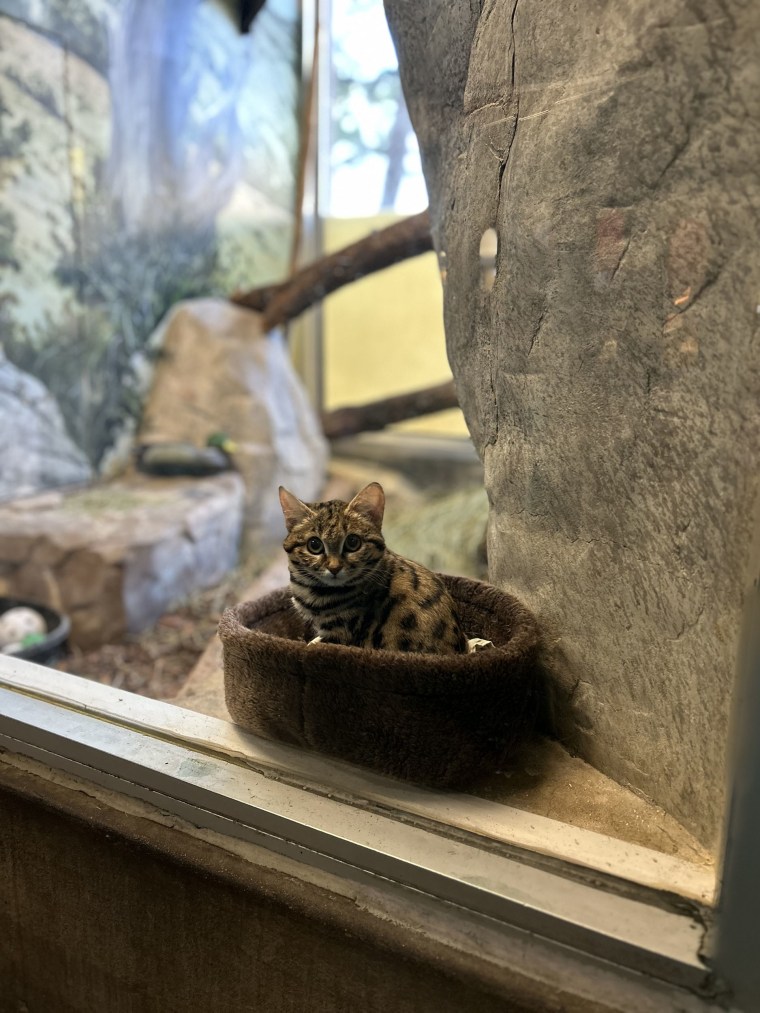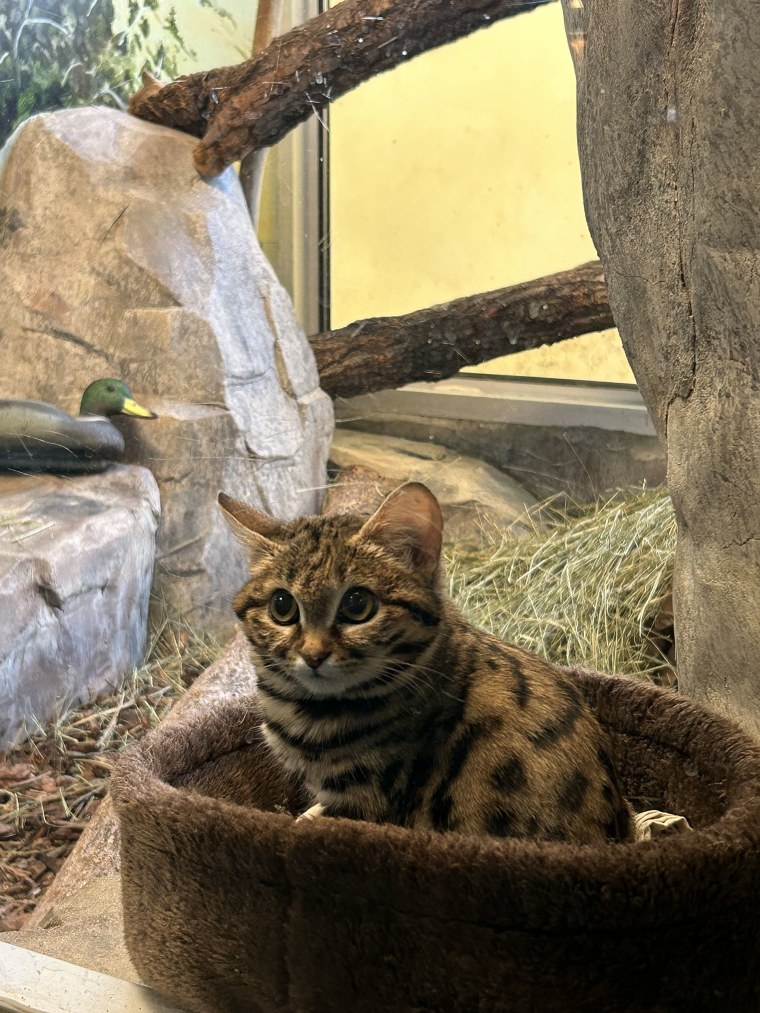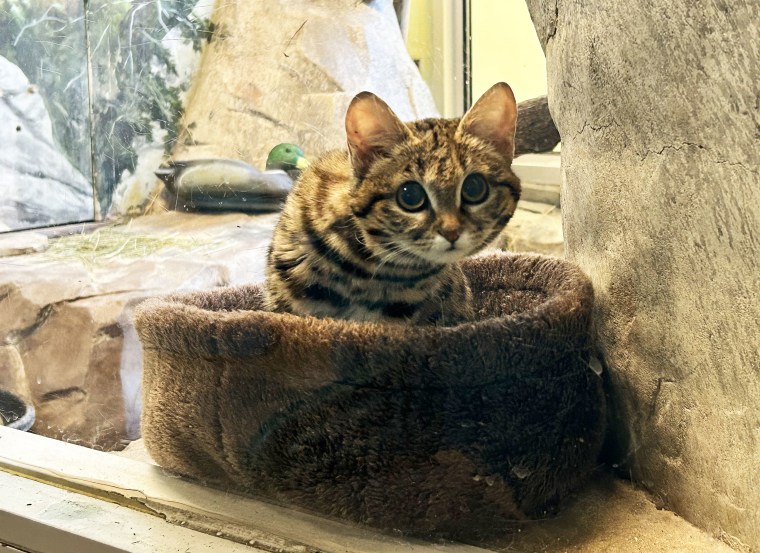A Salt Lake City zoo has welcomed the world’s deadliest cat, which apparently is also the cutest.
On Dec. 28, Utah’s Hogle Zoo announced the arrival of its newest resident: Gaia, an 8-month-old predatory feline belonging to a species known as the black-footed cat. Gaia is not yet fully grown and weighs in at 2.6 pounds.
Black spots and stripes are dotted all along Gaia’s tawny fur, and her pupils can grow so big she could give Puss in Boots a run for his money.
But don’t let her looks fool you.

Bob Cisneros is the associate director of Animal Care at Utah’s Hogle Zoo. Speaking to TODAY.com, he says that her adorable attributes aren’t exactly what most people would expect from animals with her particular skill set. In their natural habitat — the grassland savannas of Southern Africa — black-footed cats are impressive predators.
“Am I allowed to say they’re the badass of the Botswana?” Cisneros quips, noting that most carnivores have a 25% success rate when hunting. Black-footed cats, on the other hand?
“They’re successful (more than) 60% of the time,” he says. “That makes them pretty effective as hunters.”

Preying on "anything smaller than them," like birds, reptiles and rodents and hunting mostly at night or dawn and dusk, these adorable but deadly creatures are "the sassy cat of the savanna," Cisneros says.
Now, Hogle Zoo hopes Gaia be successful at helping in the conversation of her species. The IUCN Red List of Threatened Species lists black-footed cats as “vulnerable.” Cisneros notes that Gaia came to the zoo through a breeding program that promotes species survival. Gaia is young now, but once she has matured, she will be able to start the breeding process with a male black-footed cat named Ryder, who is currently living at the zoo.
Cisneros says they are being careful to breed Gaia with a good match for "genetic diversity."
"Like, zoological matchmaking," he says, adding they went through an association that specializes in that. "It's done so there's no inbreeding...we're trying to find the most distant related."
Until then, Gaia’s caretakers at Hogle Zoo will work to encourage her to express her natural behaviors. Cisneros says the zoo is working to help her hone her natural abilities, including hunting and problem-solving.

